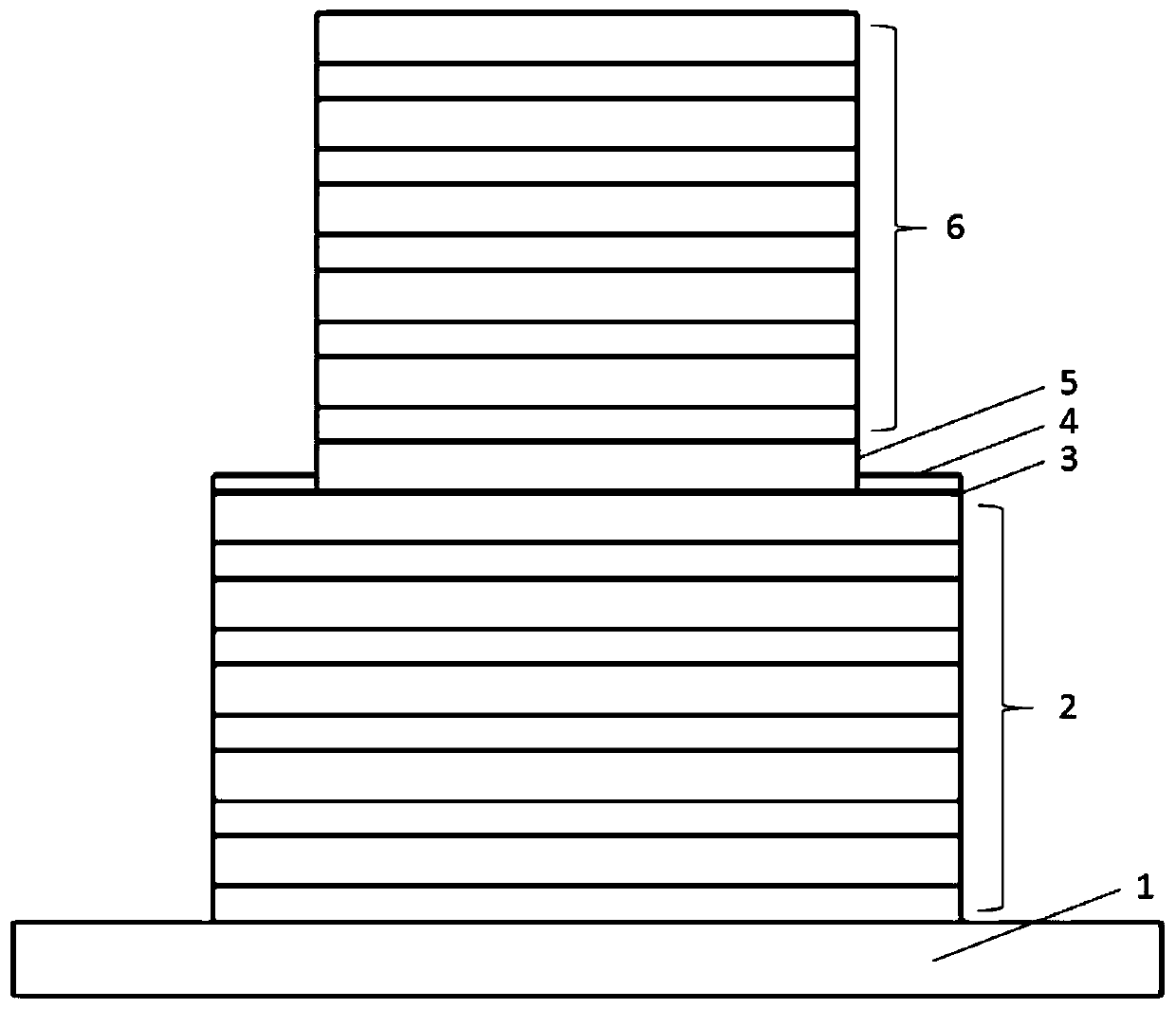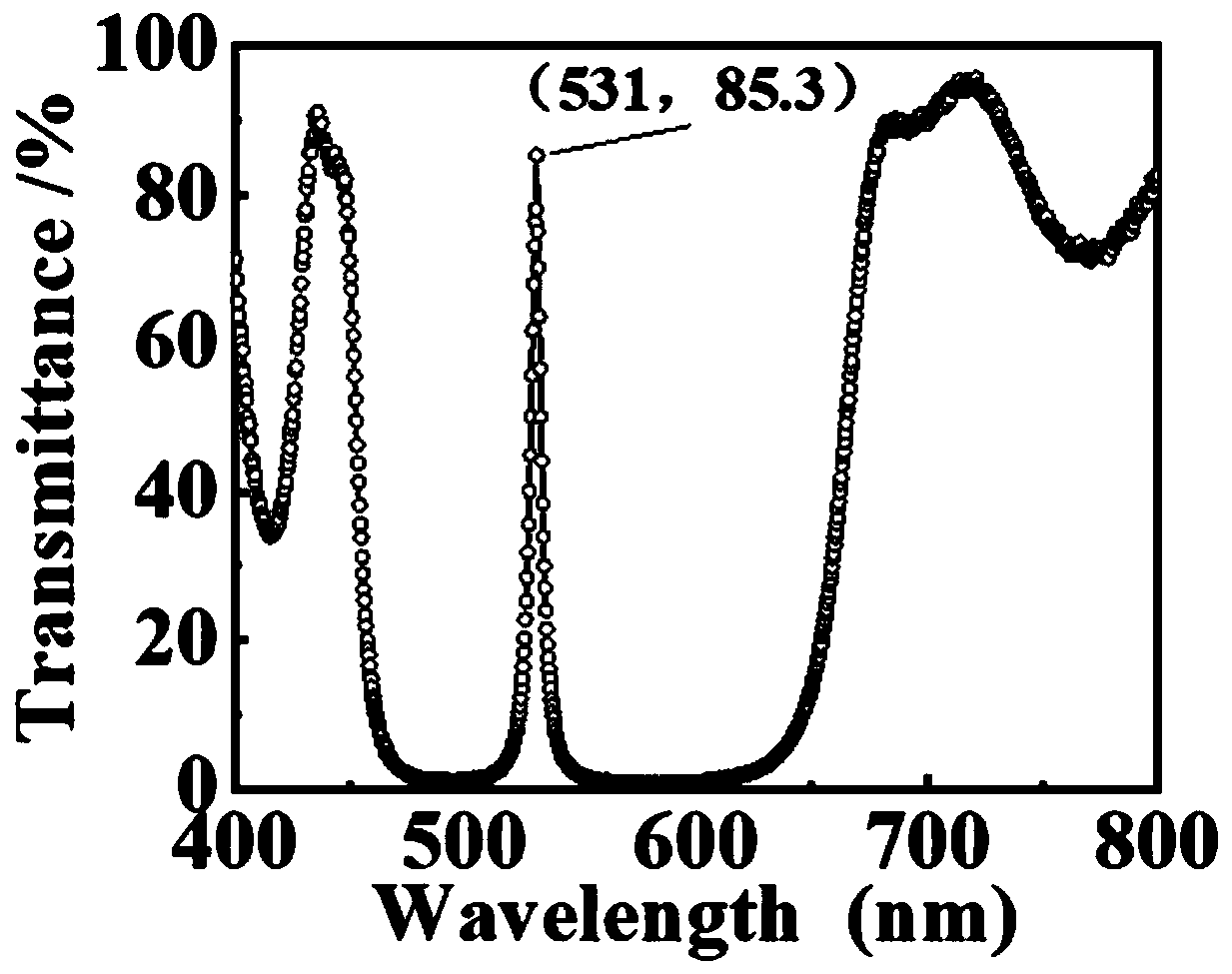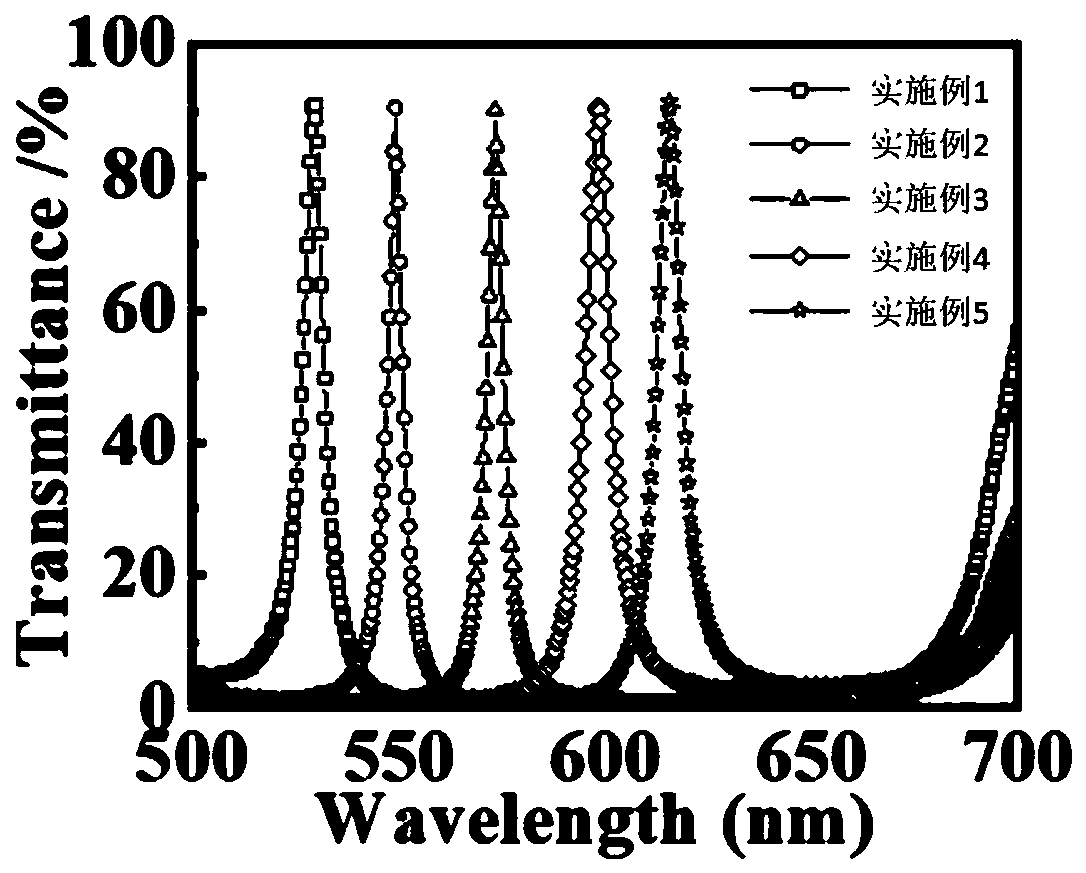Graphene photoelectric detector with band-pass filtering from visible light to near-infrared light
A photodetector and bandpass filtering technology, applied in the field of photoelectric detection, can solve problems such as cost increase, and achieve the effect of improving absorption and photoresponsivity.
- Summary
- Abstract
- Description
- Claims
- Application Information
AI Technical Summary
Problems solved by technology
Method used
Image
Examples
Embodiment 1
[0034] A graphene photodetector with bandpass filtering in the visible to near-infrared band, such as figure 1 As shown, the detector includes a substrate 1 , a first film stack 2 , a photodetector layer, a silicon dioxide defect layer 5 and a second film stack 6 stacked sequentially from bottom to top, and the thickness of the resonant cavity is 175 nm.
[0035] The material of the substrate 1 is optical float glass.
[0036] The first membrane stack 2 includes alternately arranged niobium pentoxide layers and silicon dioxide layers, and the total number of layers in the first membrane stack 2 is 10 layers. The first film stack preparation method is to use ion source-assisted electron beam evaporation to alternately grow niobium pentoxide and silicon dioxide thin films in sequence. The thickness of each layer is controlled by a quartz crystal film thickness monitoring system. The thickness of the niobium pentoxide layer is 60.4nm , the thickness of the silicon dioxide layer ...
Embodiment 2
[0041] A graphene photodetector with bandpass filtering in the visible to near-infrared band, such as figure 1 As shown, the difference from Example 1 is that the thickness of the resonant cavity is 185nm.
Embodiment 3
[0043] A graphene photodetector with bandpass filtering in the visible to near-infrared band, such as figure 1 As shown, the difference from Example 1 is that the thickness of the resonant cavity is 190 nm.
PUM
| Property | Measurement | Unit |
|---|---|---|
| Thickness | aaaaa | aaaaa |
| Layer thickness | aaaaa | aaaaa |
| Thickness | aaaaa | aaaaa |
Abstract
Description
Claims
Application Information
 Login to View More
Login to View More - R&D
- Intellectual Property
- Life Sciences
- Materials
- Tech Scout
- Unparalleled Data Quality
- Higher Quality Content
- 60% Fewer Hallucinations
Browse by: Latest US Patents, China's latest patents, Technical Efficacy Thesaurus, Application Domain, Technology Topic, Popular Technical Reports.
© 2025 PatSnap. All rights reserved.Legal|Privacy policy|Modern Slavery Act Transparency Statement|Sitemap|About US| Contact US: help@patsnap.com



